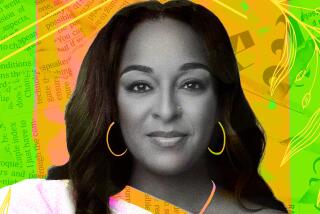Community Essay : It’s Not Just a Black Thing : African-American history: Today, universities embrace all ethnic backgrounds and both genders--a change catalyzed by the civil-rights movement.
- Share via
For those who do not know, February is Black History Month. The month-long focus on African-American history, often viewed as polemical and, yes, even dubious, is presented in the media, university programs and numerous community events.
Every Sunday during February, I wear a Gospel choir robe adorned with the African liberation colors: red, representing bloodshed from a universal African struggle; black, representing the people; green, representing hope. I enjoy the Afrocentric homilies given at my church during this special time, and attend as many events I can.
My enthusiasm for Black History Month is especially interesting in light of the fact that I am not African-American. I am Filipino, born and raised in the United States.
What do I, as well as others who cannot trace their American roots to the Middle Passage, gain from the yearly Afrocentric February?
For myself, learning about the trials and tribulations of African-Americans is interesting, educational and important because their experience set precedent for me as a Filipino-American. Two examples from the civil-rights era:
- When “Negroes” and “colored” folks decided to remove the labels placed on them by renaming themselves black, Asians followed suit, rejecting the label “Oriental.”
- In 1989, two older white professors that I had at UC San Diego noted that their classrooms had changed dramatically in the past 15 to 20 years. The students then were, with very few exceptions, white and male. Today’s student populations are made up of all ethnic backgrounds and both genders. The civil-rights era undoubtedly catalyzed the acceptance of social change; one direct result of the movement, affirmative action, emerged to fight institutionalized racism in university admissions policy. At the time I was accepted to UC San Diego, Filipinos were an affirmative-action group.
Many of today’s African-American issues are also addressed in February, the outcomes of which continue to be of interest to my own people. The light skin/dark skin issue (that is, the misperception that having mixed European bloodlines--and therefore features--is elevating and more attractive) permeates my own culture. As this misperception is refuted in African-American movies, music and literature, I hope my Filipino brothers and sisters hear the message, too.
On university campuses across the country, the growing presence of predominantly African-American and now Asian fraternities and sororities is stirring controversy. I ask: Are these groups advocating separatism? Or are they simply acknowledging the premise that different ethnic groups have different needs and interests that are not met by established groups?
Thanks to the barriers broken by African-Americans, I had the privilege of studying at a very prestigious university and have equal access to all public places. Although I am well aware of the struggles of Filipino migrant farm workers earlier in this century, I realize that I walk in the footsteps of African-Americans in many areas that are often taken for granted.
I challenge and implore everyone of all ethnic backgrounds to pay attention to Black History Month. February should not be thought of as pertaining only to Americans of African descent. I am confident that all people, regardless of their ethnic background, can gain some insight from these history lessons.


